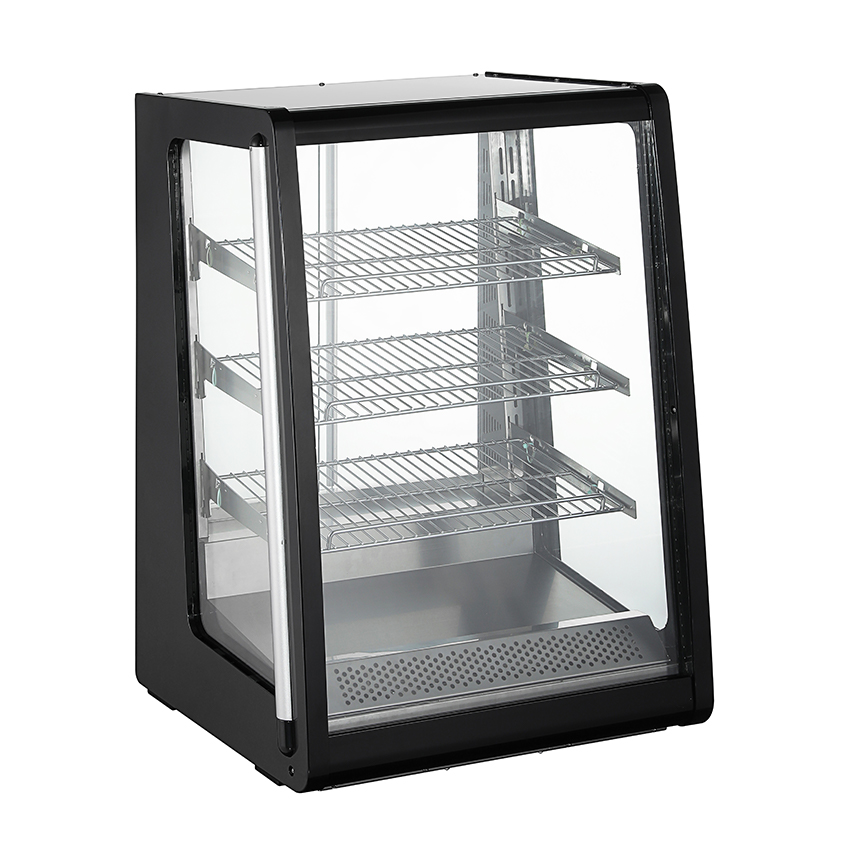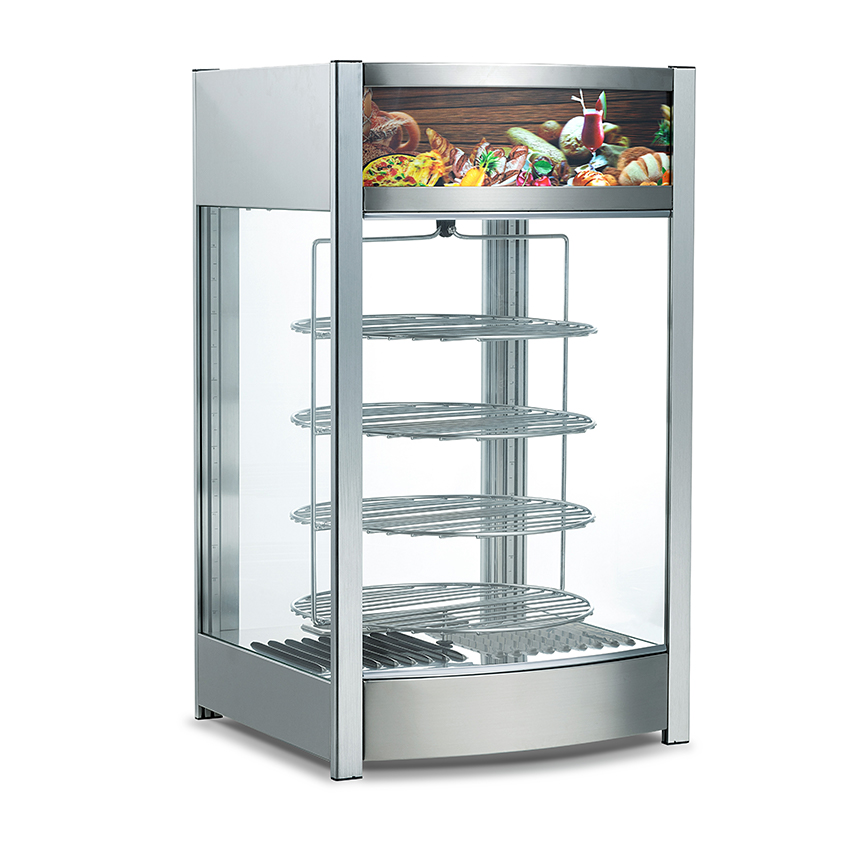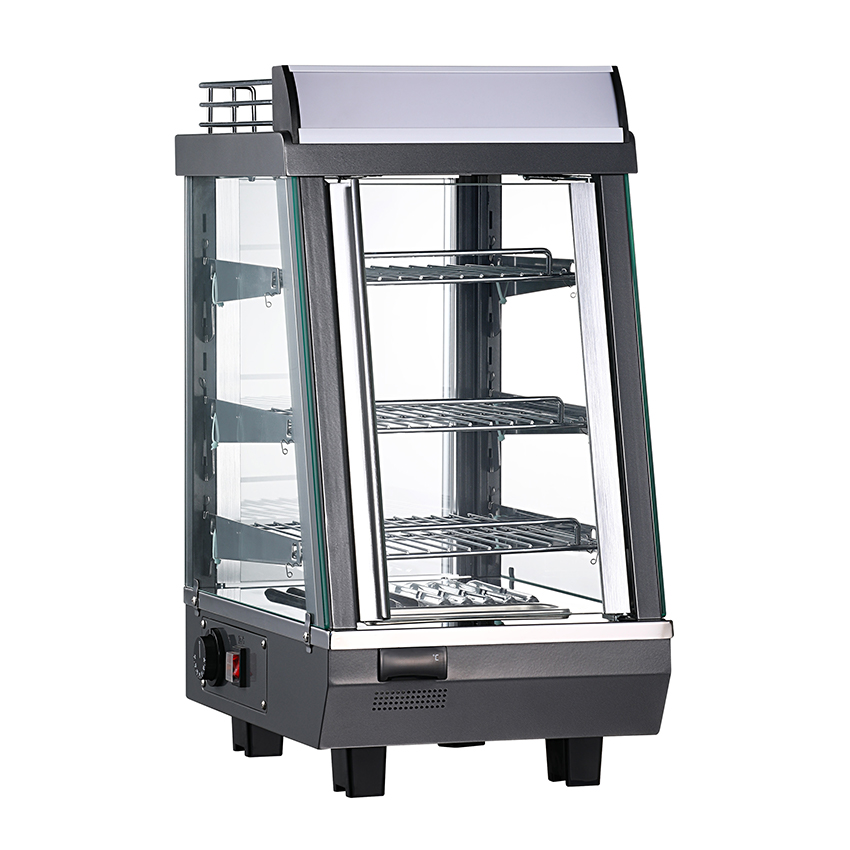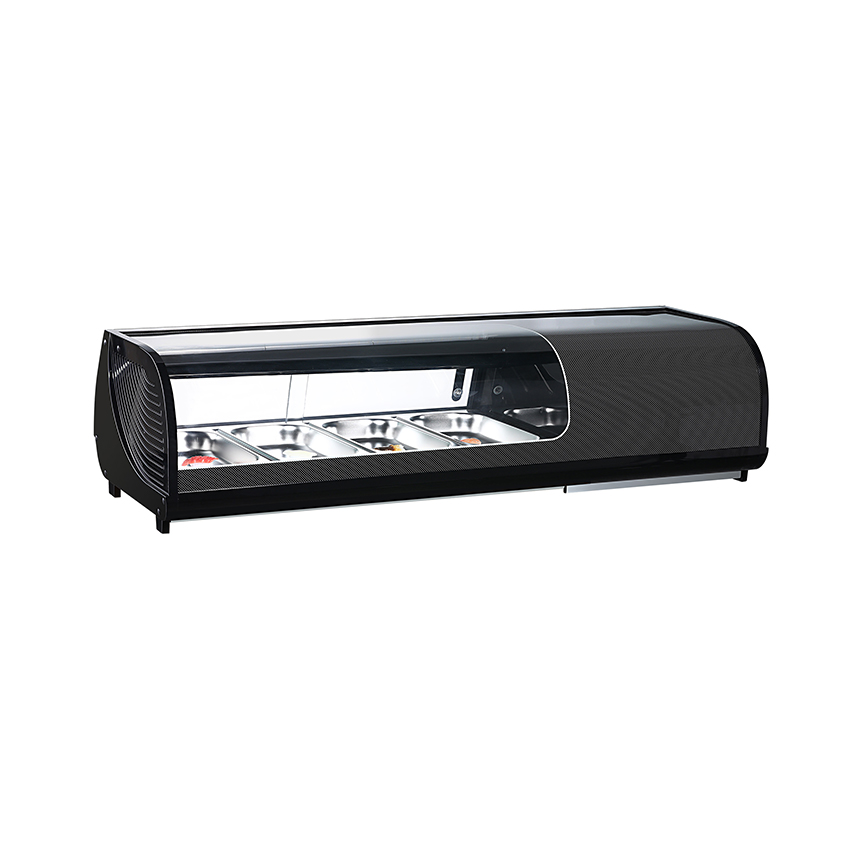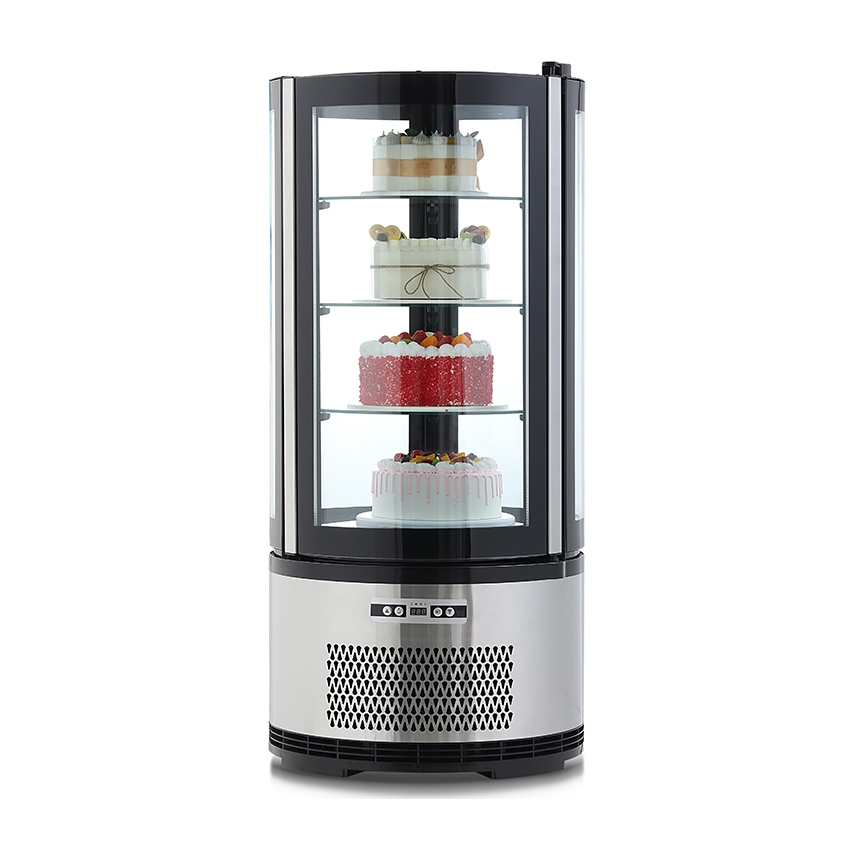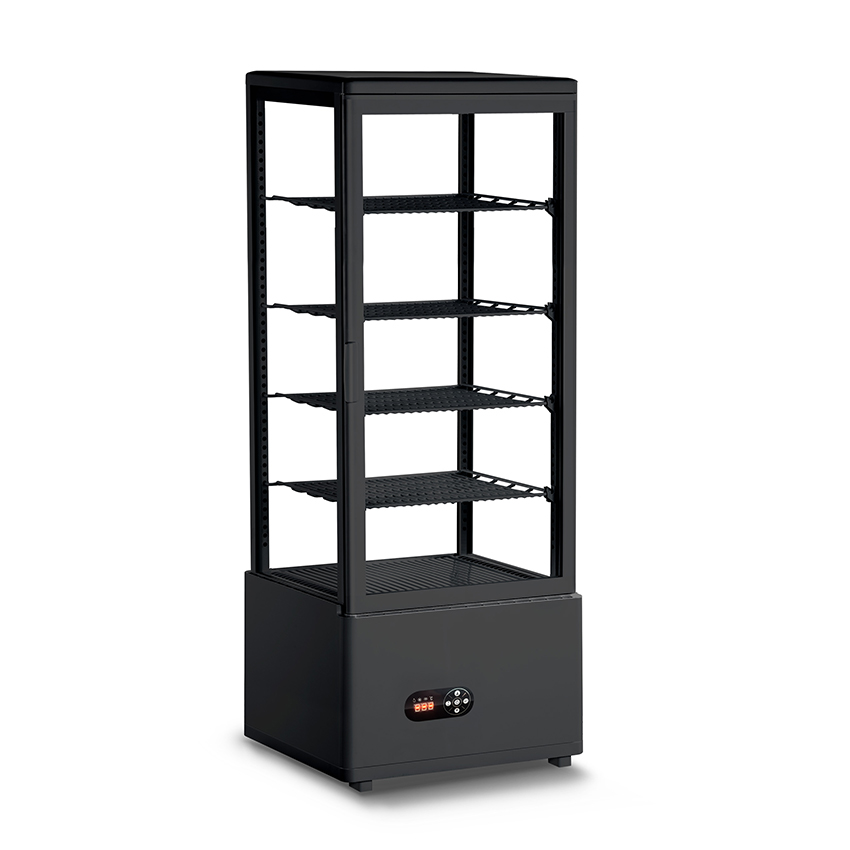1. Material selection for easy-to-clean design
The easy-to-clean performance of multi-product thermal display cabinets is based on their material selection. High-quality materials can not only resist the penetration of food contaminants, but also withstand the test of frequent cleaning and disinfection. High-end thermal display cabinets generally use 304 food-grade stainless steel as the main structural material. This alloy containing 18% chromium and 8% nickel has excellent corrosion resistance. The passivation film formed on its surface can effectively prevent oxidation reactions and avoid rust. Compared with ordinary 201 stainless steel, 304 stainless steel performs better in acid and alkali resistance and pitting resistance, and is especially suitable for scenes with contact with acidic foods or using chlorine-containing detergents.
The transparent part of the thermal display cabinet usually uses heat-resistant tempered glass with a thickness of 8-12mm. After special heat treatment, the surface hardness of this material can reach Mohs 6 or above, and it is not easy to be scratched by tableware or cleaning tools.
In terms of non-metallic parts of thermal insulation display cabinets, easy-to-clean design is also spared no effort. Standard ABS engineering plastics are mostly used in food contact areas. The surface smoothness Ra value of this material can reach below 0.2μm, which is close to the smoothness level of stainless steel, but the weight is reduced by 60%. Food-grade silicone is generally used instead of traditional rubber for cabinet sealing strips. It not only has a wider temperature resistance range (-40℃~200℃), but also is not easy to age and harden, maintains long-term sealing, and prevents dirt from accumulating in the gaps.
The cleaning and maintenance considerations of insulation layer materials are often overlooked. Poor-quality insulation materials such as polystyrene (EPS) are easy to absorb moisture and breed mold, while some high-end display cabinets use closed-cell polyurethane foam (PU) with a density of more than 40kg/m³. Not only is the thermal conductivity as low as 0.022W/(m·K), but it also hardly absorbs water, eliminating the hidden danger of internal mildew.
The last line of defense in material selection is the surface treatment process. Although 304 stainless steel is corrosion-resistant, it still needs additional protection in environments with long-term contact with salt and acidic substances. Surface treatment includes electrolytic polishing (EP) and physical vapor deposition (PVD). Electrolytic polishing enriches the chromium content on the surface of stainless steel to form a denser passivation film; PVD can deposit super-hard coatings such as titanium nitride on the surface, increasing the hardness by more than 3 times. Although these processes increase production costs by 15-25%, they can shorten the cleaning time of the display cabinet by more than 40%, with significant long-term economic benefits.
2. Structural design and cleaning optimization
The structural design of multi-product thermal insulation display cabinets has no less impact on easy-to-clean performance than material selection. Excellent design can eliminate sanitary dead corners and simplify the cleaning process. Modern display cabinets generally use integrated molding technology. The cabinet body is formed by bending a whole piece of stainless steel plate, and the traditional corners that need to be spliced are changed to smooth arc transitions, with a radius of usually not less than 20mm. This design is not only beautiful, but more importantly, it eliminates the problem of dirt accumulation at right-angle joints.
The drainage system design of the thermal insulation display cabinet is a key link in cleaning and maintenance. The drainage trough in traditional design often becomes a breeding ground for microorganisms, while the new display cabinet adopts a fully tilted chassis design with a slope of not less than 3°, and a concealed drainage channel to ensure that condensed water and overflowing liquid are quickly drained to the water collection box.
The modular design of the internal components of the thermal insulation display cabinet greatly simplifies the deep cleaning process. The detachable parts such as display racks, shelves and lamps are all equipped with tool-free quick-release structures, which can be disassembled within 30 seconds. The shelf support structure generally adopts the "cantilever type" instead of the traditional pillar type, eliminating the dead corner at the root of the pillar that is difficult to clean
The humanized design of the details further improves the cleaning efficiency. Including: hidden hinges to avoid oil accumulation; detachable oil trays to facilitate the cleaning of dripping liquids; magnetic dust covers that automatically cover the display surface during non-business hours; and cleaning tool storage slots integrated on the side of the cabinet.
3. Surface treatment technology and antibacterial process
The surface treatment technology of multi-product thermal insulation display cabinets has developed from a simple protective coating to a multifunctional solution that integrates easy cleaning, antibacterial and beautiful. The application of coating technology in the field of thermal insulation display cabinets marks the progress of surface treatment.
Wear resistance is an important indicator for evaluating the durability of surface treatment. The surface of thermal insulation display cabinets needs to withstand daily wear and tear such as steel wool and detergents. Commercial-grade display cabinets also often apply local strengthening treatments to easily worn parts such as door handles and shelf edges, such as laser cladding of tungsten carbide particles to form a particularly durable protective layer. Although these technologies increase local costs, they greatly extend the validity period of surface treatment and have significant overall economic benefits.
The design of the association between color and cleaning is a detail that is easily overlooked. Studies have shown that specific colors can effectively cover common food stains, such as deep champagne colors are less likely to show water stains and oil spots than standard stainless steel. Modern surface treatment technology can achieve more than 90% color coverage of the RAL color card, allowing merchants to match the brand visual system while maintaining easy-to-clean performance.


 English
English русский
русский Español
Español Français
Français عربى
عربى italiano
italiano
